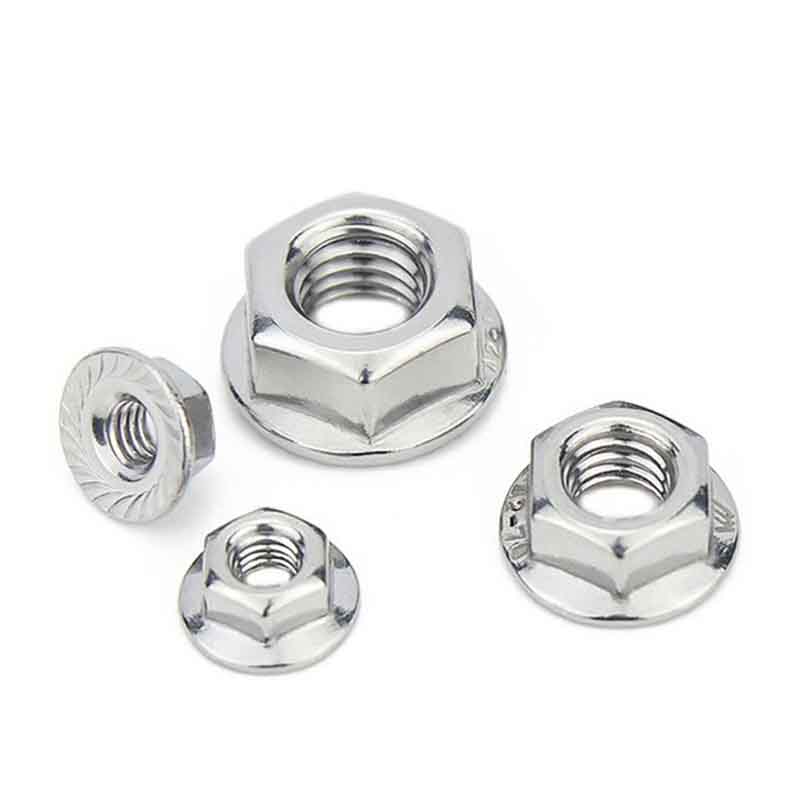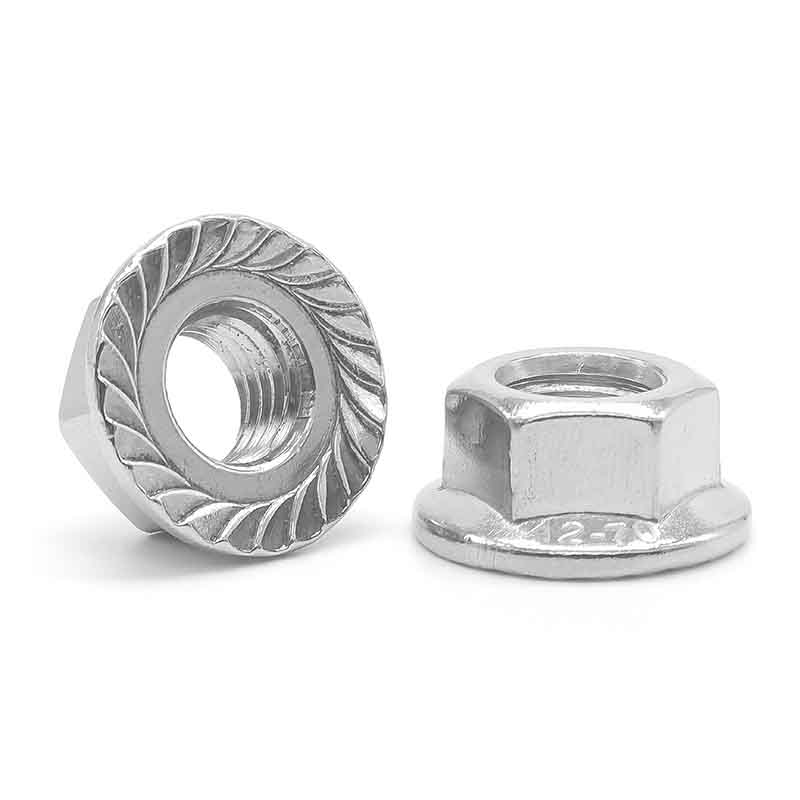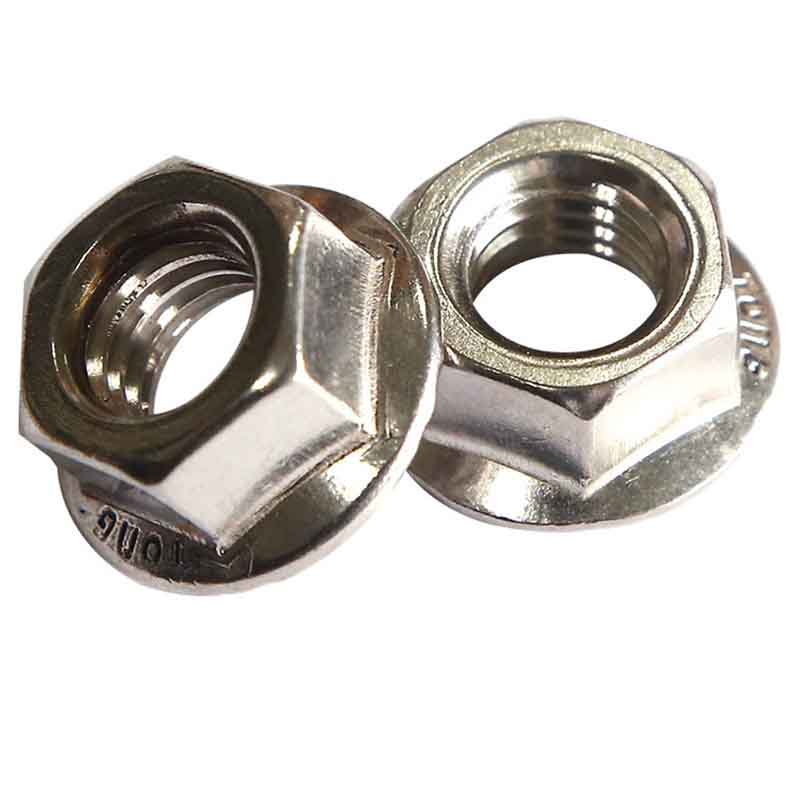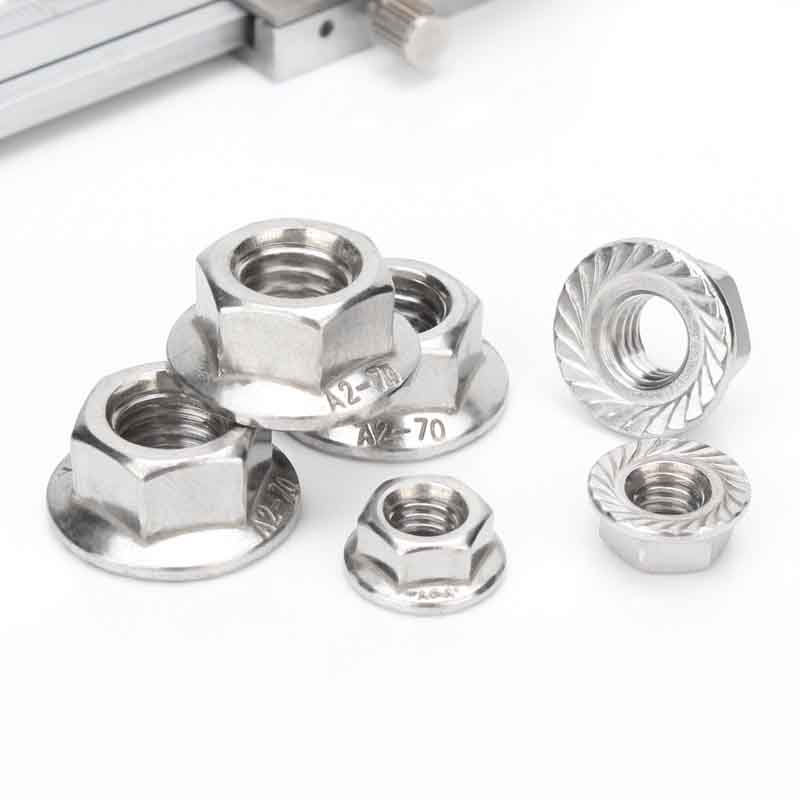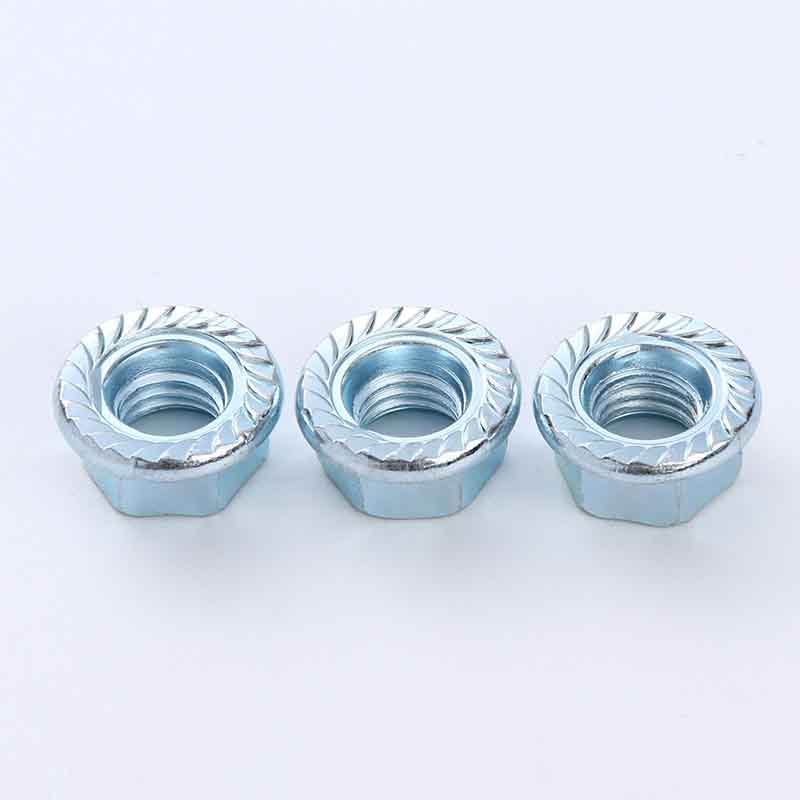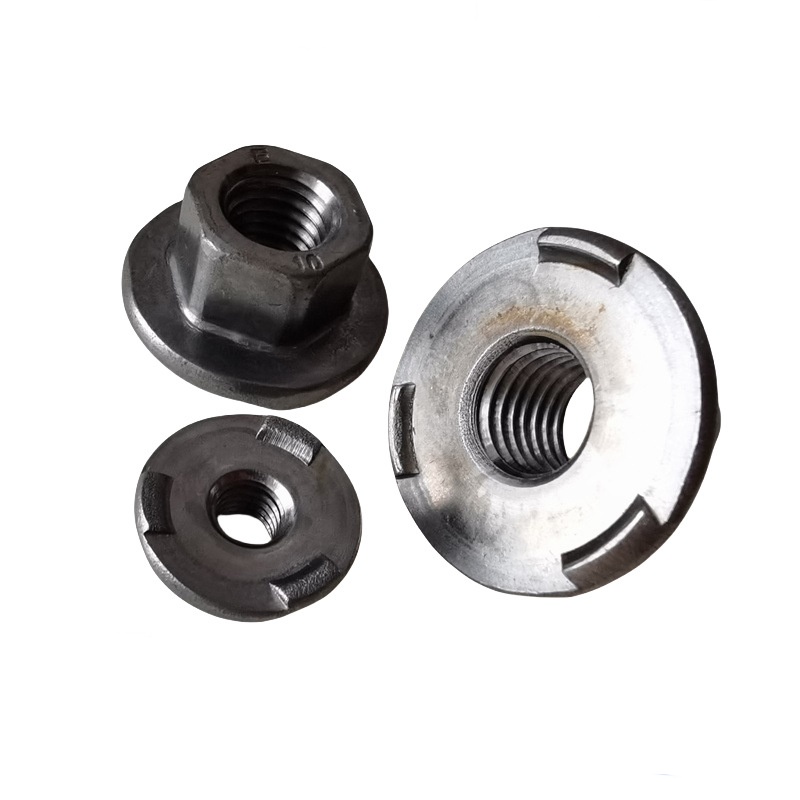Hexagonal Flange Bearing Nut
Send Inquiry
Hexagonal flange bearing nut securely locks bolts in high vibration environments. It combines a hexagonal flange (for surface gripping) with teeth underneath the flange that bite into the material and prevent rotation. They are used in machinery, vehicles or buildings.
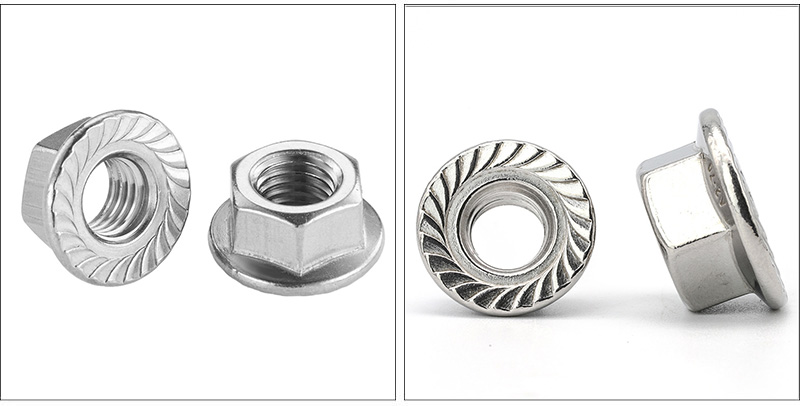
Product details and parameters
Hexagonal flange bearing nuts have sharp teeth under the flange that grip the surface when tightened. The flange distributes the load and prevents damage to the nut, and the hexagonal head can be used with standard wrenches. We use galvanized steel to prevent the nut from rusting. The teeth are angled to bite deeper under pressure and stay tight longer.
For automotive applications, hexagonal flange bearing nut is often used in places where vibration is intense, such as wheel hubs, suspension systems or drivetrain components. The flange provides a larger contact area, and the tooth shape ensures that the product is firmly fixed, even on uneven surfaces.
Have the nuts come loose during work? Hexagonal flange bearing nut will solve this problem. Its teeth penetrate deep into the surface, creating friction that locks it in place. The hexagonal shape works with standard sockets, and the flanges distribute the load and protect softer materials from damage. Whether you are assembling farm equipment or repairing motorcycles, this nut reduces downtime. It requires no thread locking agent and can be installed only once.

Our market distribution
Market
Revenue(Previous Year)
Total Revenue (%)
North America
Confidential
22
South America
Confidential
10
Eastern Europe
Confidential
20
Southeast Asia
Confidential
2
Oceania
Confidential
5
Mid East
Confidential
5
Eastern Asia
Confidential
15
Western Europe
Confidential
20
South Asia
Confidential
3
Why It Beats Standard Flange Nuts
Hexagonal flange face bearing toothed nut added teeth in order to increase the grip of the product, making it more flexible than smooth flange nut 2-3 times. You don't need a lock washer or thread lock, just install it. It's a little more expensive, but it's worth it for critical work.





